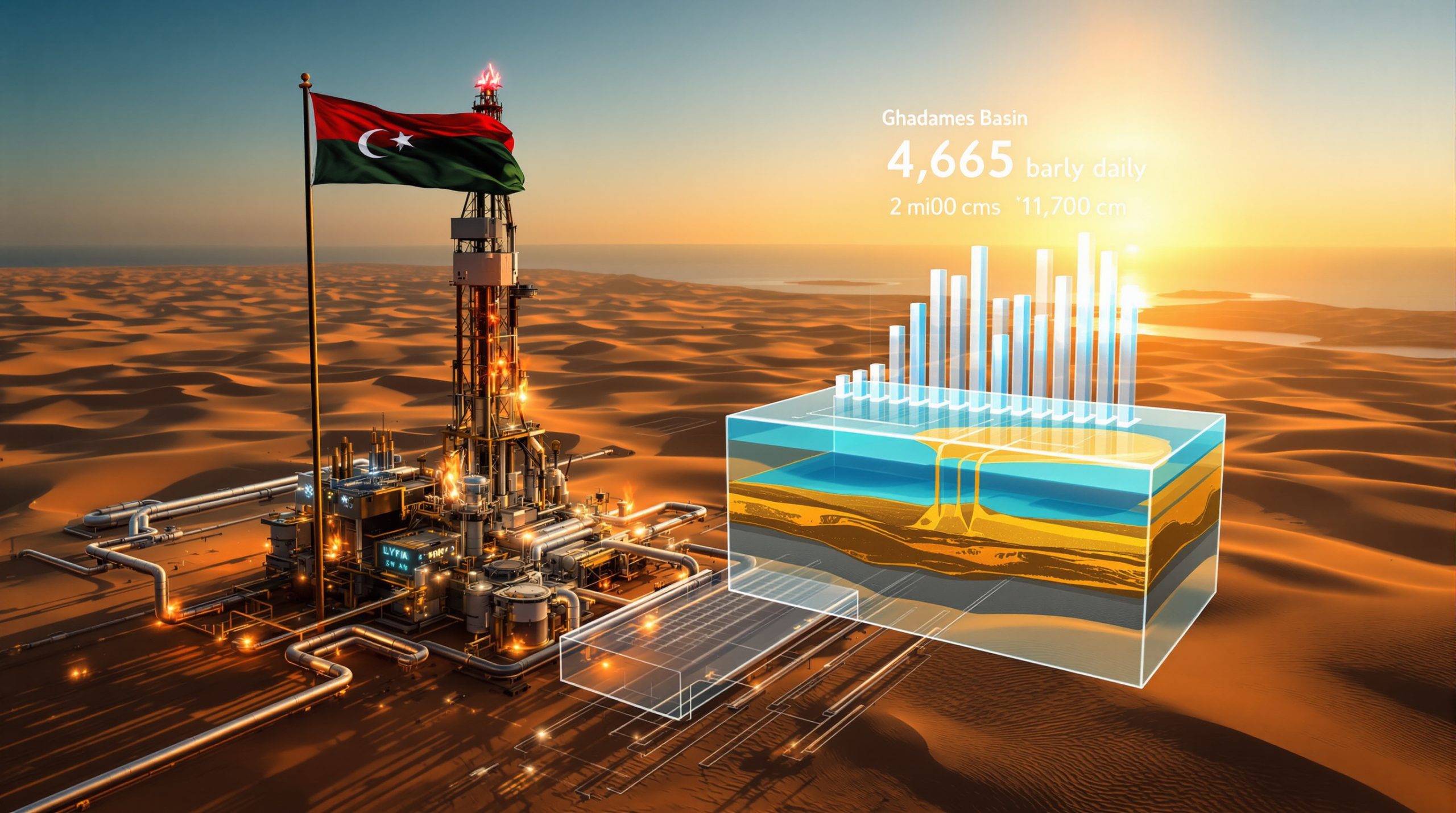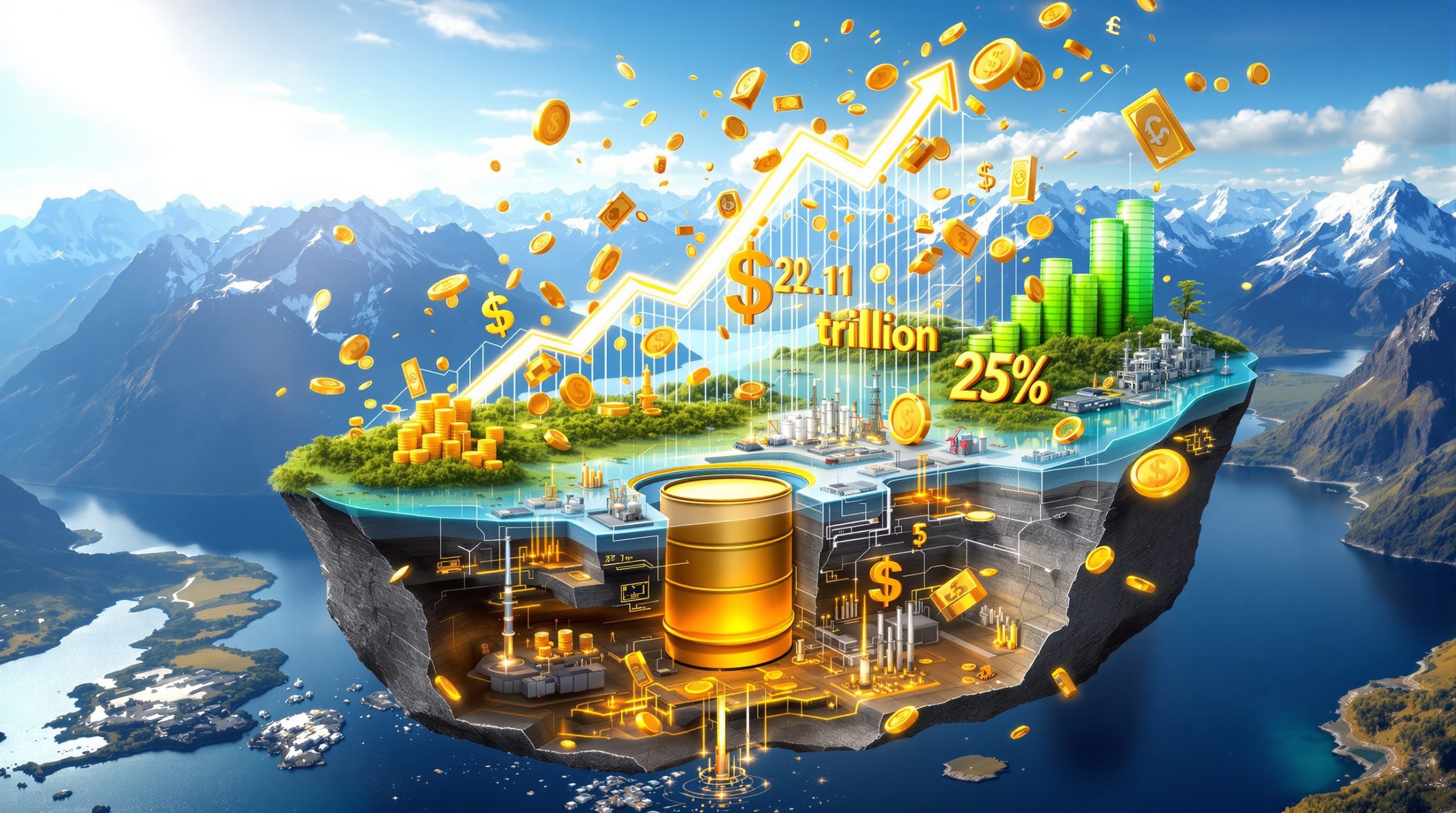What Is Rare-Earth Magnet Recycling and Why Does It Matter?
Rare-earth magnet recycling represents a transformative approach to critical materials recovery, involving the systematic extraction and reprocessing of valuable magnetic compounds from discarded electronics, electric vehicles, and industrial equipment. This emerging sector addresses growing supply chain vulnerabilities while offering significant environmental advantages over traditional mining operations, particularly as the critical minerals energy transition accelerates global demand.
The process transforms what was previously considered electronic waste into high-value feedstock for new magnet production. Modern recycling techniques can recover neodymium, dysprosium, and praseodymium with purity levels matching virgin materials, creating genuine circular economy opportunities within the critical minerals sector.
Current market dynamics favour this transition. With Chinese operations controlling 60-90% of global rare-earth output, recycling provides strategic supply diversification for Western economies increasingly dependent on these materials for clean energy and defence applications.
The Current State of Magnet Waste Streams
Despite containing materials valued at thousands of dollars per tonne, over 99% of rare-earth magnets currently bypass recovery systems entirely. Industry analysis indicates that less than 1% of rare-earth magnets globally originate from recycled sources, with U.S. figures falling below even this minimal threshold.
The vast majority of spent magnets containing valuable rare-earth elements continue flowing into landfills or low-grade scrap processing facilities, representing billions of dollars in unrealised resource value annually.
This waste stream paradox persists despite technological breakthroughs and increasing policy support. Economic factors, collection infrastructure limitations, and processing capacity constraints combine to perpetuate this massive resource inefficiency across global markets.
How Do Rare-Earth Magnets End Up in Our Waste Stream?
The proliferation of permanent magnet applications across modern technology creates diverse and substantial waste streams as products reach end-of-life. Neodymium-iron-boron and samarium-cobalt magnets have become integral components in consumer electronics, automotive systems, and renewable energy infrastructure, generating complex recycling challenges.
Electric vehicle adoption accelerates this trend, with each EV containing 600-1,200 grams of NdFeB magnets within motor assemblies. Wind turbine installations compound the scale, as direct-drive generators incorporate 200-600 kilograms of rare-earth magnets per megawatt of capacity.
Consumer electronics contribute the highest volume waste streams, though individual devices contain relatively small magnet quantities. Hard disk drives represent particularly attractive targets for recycling operations due to their concentrated, high-grade magnet content and established collection networks.
Primary Sources of Magnet-Containing Waste
| Waste Source | Annual Volume (Est.) | Key Magnet Types | Recovery Complexity |
|---|---|---|---|
| Hard disk drives | 2.5 billion units | NdFeB (high-grade) | Medium – concentrated deposits |
| Electric vehicle motors | 14 million units | NdFeB (large format) | High – integrated assemblies |
| Wind turbine generators | 8,000 units | NdFeB (massive scale) | Very High – remote locations |
| Consumer electronics | 6 billion devices | Mixed rare-earth types | Low – small quantities |
Industrial equipment and medical devices contribute additional waste streams, though volumes remain smaller compared to consumer and automotive sources. Manufacturing scrap from magnet production facilities offers the highest-quality feedstock, with minimal contamination and known compositions.
Geographical concentration affects collection efficiency significantly. Urban centres generate substantial electronics waste but lack processing facilities, while manufacturing regions produce higher-grade scrap with better collection infrastructure.
What Are the Three Main Recycling Technology Pathways?
The rare-earth magnet recycling industry has consolidated around three distinct technological approaches, each optimised for different feedstock types and economic objectives. These pathways represent varying levels of technological maturity and commercial viability.
Hydrogen Decrepitation – The "Magnet-to-Magnet" Revolution
This breakthrough methodology injects hydrogen gas into sintered magnet structures, causing controlled expansion and fracturing without chemical degradation. The resulting powder maintains its original alloy composition, enabling direct remanufacturing into new magnets with minimal processing.
HyProMag's Texas operations exemplify this approach, targeting 750 tonnes annual processing capacity through partnerships with electronics waste firms. Their hydrogen-processed powder reportedly matches new magnet specifications while achieving over 90% energy savings compared to virgin production.
Key Performance Metrics:
• Material recovery rates: 90-95% of original magnet content
• Energy savings vs. virgin production: 90% reduction in processing energy
• Processing capacity: 750+ tonnes annually at leading facilities
• Quality retention: Matches or exceeds virgin magnet specifications
• Alloy preservation: Maintains original composition ratios
The technology addresses previous limitations of chemical recycling methods, which often degraded alloy integrity during processing. Hydrogen decrepitation preserves the precise ratios of neodymium, iron, and boron essential for magnetic performance.
Companies like Noveon and Hitachi Metals have developed parallel hydrogen-based processes, indicating broad industry recognition of this approach's commercial potential. Processing costs remain higher than hydrometallurgical alternatives, but quality advantages justify premium pricing for specific applications.
Hydrometallurgical and Pyrometallurgical Extraction
Chemical and thermal processing methods break down magnet materials into constituent elements, allowing for purification and reconstitution of rare-earth compounds. These approaches excel at handling contaminated or mixed waste streams that challenge direct recycling methods.
Phoenix Tailings employs acid-free leaching combined with molten salt electrolysis to achieve 98% element recovery rates from diverse feedstock sources. Their pilot operations process 200 tonnes annually, with expansion plans targeting thousands of tonnes within five years.
Process Advantages:
• Handles heavily contaminated feedstock without quality degradation
• Produces battery-grade rare-earth compounds for multiple applications
• Processes multiple material types simultaneously within single facilities
• Achieves 98%+ element recovery rates from mixed waste streams
• Generates valuable byproducts including steel and copper recovery
Canadian company Cyclic Materials demonstrates multistage leaching approaches specifically designed for electric vehicle motor assemblies and consumer electronics. Their processes achieve over 90% rare-earth element recovery while handling the complex material matrices typical of end-of-life products.
European operations led by Solvay and Umicore focus on polishing powders, magnet scrap, and spent catalysts to reclaim cerium, lanthanum, neodymium, and dysprosium. These facilities integrate with existing chemical processing infrastructure, reducing capital requirements for market entry.
Advanced Separation Technologies
Emerging techniques utilise ion-exchange resins, membrane extraction, and bio-adsorbent materials to concentrate rare-earth elements from complex waste matrices. These methods target previously uneconomical waste streams while reducing environmental impact compared to traditional chemical processing.
ReElement Technologies employs ion-chromatography separation techniques with support from defence funding sources. Their Noblesville facility expansion represents significant scaling efforts within the advanced separation sector.
Recent Department of Energy research has engineered three-dimensional graphene sponge structures specifically designed to capture rare-earth elements from shredded electronic waste. This breakthrough addresses the challenge of processing mixed, low-grade feedstock economically.
Oak Ridge National Laboratory and Ames Laboratory continue developing membrane and solvent extraction technologies that promise reduced chemical consumption and enhanced selectivity for specific rare-earth elements. These approaches may prove essential for processing complex waste streams from future technology applications.
REEcycle's electrochemical separation methods offer alternatives to traditional acid leaching, potentially reducing environmental impact while maintaining high recovery rates. Early pilot results suggest commercial viability for specific waste stream applications.
Which Companies Are Leading the Global Recycling Scale-Up?
North American Market Leaders
Strategic partnerships between major corporations and technology startups characterise North American market development. Apple's $500 million multiyear partnership with MP Materials represents the largest commercial commitment to recycled magnet supply chains announced to date.
MP Materials will integrate recycled magnet feedstock into their Texas Independence facility beginning around 2027, utilising a dedicated recycling line at their Mountain Pass, California operations. This vertical integration approach combines upstream mining with downstream recycling capabilities.
Processing Capacity Expansion:
• Texas-based facilities targeting 30,000 tonnes annual throughput by 2027
• Strategic partnerships with major electronics manufacturers for feedstock supply
• Government backing through defence and energy security programs worth billions
• Integration with existing mining operations for feedstock diversification
• Employment creation estimates of 5,000-8,000 direct positions by 2030
HyProMag's joint venture with Intelligent Lifecycle Solutions targets hard-drive scrap processing in the Dallas-Fort Worth region, processing approximately 750 tonnes of NdFeB magnets annually within several years. This partnership demonstrates the viability of specialised waste stream targeting.
Government support has increased dramatically, with Department of Energy funding for critical mineral recycling rising 5-10 times since 2020. This support includes grants, loan guarantees, and strategic stockpile purchases designed to guarantee market demand for recycled products.
European Circular Economy Initiatives
The European Union's Critical Raw Materials Act mandates 25% recycled content in key magnet applications by 2030, creating unprecedented market certainty for recycling investments. This regulatory framework drives coordinated investment across automotive and electronics sectors.
Regional Development Highlights:
• £11 million consortium projects spanning automotive and electronics sectors
• Italy's first dedicated magnet recycling facility with €2.6 million investment
• Integration with automotive OEM supply chains through direct partnerships
• Cross-border collaboration on collection networks and processing standards
• Employment targets of 15,000 positions across EU member states by 2030
The CREEM project led by Ionic Technologies brings together metal recycler EMR, automotive manufacturers Ford and Bentley, and bus manufacturer Wrightbus to create efficient, scalable loops for magnet recovery from end-of-life vehicles and electronics.
RarEarth's €2.6 million funding round, led by Primo Capital SGR and Mito Tech Ventures, will establish Italy's first NdFeB magnet factory utilising recycled electric motor waste. This represents broader European efforts to build domestic processing capabilities.
Policy mandates create guaranteed market demand that reduces investment risk compared to voluntary corporate commitments. Furthermore, European automakers increasingly view recycled magnet integration as essential for regulatory compliance and sustainability reporting.
Asia-Pacific Strategic Developments
India's 100-fold capacity expansion represents the most aggressive scaling effort globally. Attero's government-backed expansion from 300 tonnes to 30,000 tonnes annual processing capacity by 2027 demonstrates national-level commitment to supply chain security.
With ₹1 billion in government backing, Attero reports 98% recovery rates for neodymium, praseodymium, and dysprosium from electronics waste using proprietary processing technologies. This expansion targets self-reliance objectives within India's critical minerals strategy.
Regional dynamics favour rapid scaling due to lower labour costs, established electronics manufacturing clusters, and supportive government policies. However, downstream refining capacity limitations may constrain the value-added potential of these operations.
What Economic Factors Drive Recycling Viability?
Cost Structure Analysis
Economic viability depends on multiple cost factors that vary significantly between recycling approaches and feedstock types. Current rare-earth oxide pricing creates favourable conditions for recycling operations, particularly when processing high-grade waste streams.
| Cost Component | Virgin Mining | Recycling (Current) | Recycling (Projected 2030) |
|---|---|---|---|
| Raw material acquisition | $45-65/kg REO | $25-35/kg REO | $20-25/kg REO |
| Processing energy | 180-220 MJ/kg | 20-40 MJ/kg | 15-25 MJ/kg |
| Environmental compliance | $8-12/kg REO | $3-5/kg REO | $2-3/kg REO |
| Transportation/logistics | $5-8/kg REO | $12-18/kg REO | $8-12/kg REO |
Transportation costs represent a significant challenge for recycling operations due to distributed waste generation compared to concentrated mining operations. However, regional processing facilities can mitigate these disadvantages through strategic positioning near major waste sources.
Environmental compliance costs favour recycling significantly, as operations avoid mining-related environmental liabilities, tailings management, and habitat restoration requirements. Carbon pricing mechanisms may further improve recycling economics through avoided emission credits.
Market Price Dynamics and Recycling Economics
Rare-earth oxide price volatility creates both opportunities and risks for recycling investments. Current pricing levels support commercial operations, but sustained viability requires price stability or effective hedging mechanisms.
Economic Drivers:
• Neodymium oxide: $85-120/kg (2025 range) with supply constraints supporting higher pricing
• Dysprosium oxide: $350-450/kg due to limited global supply sources
• Processing cost reduction: 60-80% compared to virgin production methods
• Carbon credit potential: $15-25/tonne CO2 avoided through recycling
• Energy savings: 90% reduction in processing energy requirements
Market price premiums for recycled content may emerge as corporate sustainability commitments strengthen and regulatory requirements expand. Some manufacturers already pay premiums for verified recycled rare-earth content to meet environmental reporting objectives.
Supply security considerations increasingly influence purchasing decisions beyond pure cost calculations. Strategic buyers view recycled supplies as insurance against potential disruptions to traditional supply chains dominated by single-country sources.
How Are Governments Supporting Recycling Infrastructure?
Policy Frameworks and Financial Incentives
Government support for rare-earth magnet recycling has intensified dramatically since 2020, with funding increases of 5-10 times across major economies. This support addresses both environmental objectives and supply chain security concerns simultaneously.
Funding Mechanisms:
• Direct grants for technology development and commercial scaling operations
• Loan guarantees for commercial facility construction and equipment purchases
• Tax incentives for recycled content utilisation in manufacturing processes
• Strategic stockpile purchases to guarantee demand and price stability
• Research partnerships with universities and national laboratories
The United States Department of Energy has backed multiple companies including Maginito, HyProMag, and Noveon through grants and loan programs designed to accelerate commercial deployment. Defence Department support focuses on supply chain security applications.
European Union funding mechanisms combine direct investment with regulatory mandates that create guaranteed market demand. In addition, this dual approach reduces technology and market risks simultaneously, encouraging private sector investment participation.
Regulatory Mandates Driving Market Creation
European recycling quotas create guaranteed market demand that eliminates the primary commercial risk for recycling facility investments. The 25% recycled content requirement by 2030 represents billions of dollars in certain demand.
U.S. defence procurement preferences provide revenue certainty for domestic recycling operations through Buy American requirements and supply chain security protocols. These preferences often justify cost premiums compared to imported alternatives.
Regulatory frameworks increasingly recognise recycling as critical infrastructure warranting public investment support. This designation enables access to infrastructure funding programs traditionally reserved for transportation and utilities projects.
What Technical Challenges Still Limit Scaling?
Contamination and Mixed Waste Stream Issues
Real-world waste contains coatings, adhesives, and mixed metal alloys that complicate processing significantly. Nickel plating, epoxy coatings, and corrosion products can interfere with separation processes and reduce recovery rates.
Technical Hurdles:
• Coating removal without rare-earth element loss during processing
• Separation of different magnet grades and compositions within single waste streams
• Processing of corroded or physically damaged materials from outdoor applications
• Handling of radioactive trace elements found in some magnet compositions
• Managing mixed metal alloys that interfere with separation chemistry
Design-for-disassembly initiatives aim to address these challenges at the product design stage, but legacy products will continue generating complex waste streams for decades. Standardised magnet compositions and simplified disassembly processes could significantly improve recycling economics.
Trace contaminants can render recycled materials unsuitable for high-performance applications, limiting market value and application potential. Advanced purification techniques may address these issues but increase processing costs substantially.
Infrastructure and Processing Bottlenecks
Despite recycling technology breakthroughs, downstream refining capacity remains concentrated in Chinese operations, creating persistent supply chain dependencies even for recycled materials. Building alternative refining infrastructure requires billions in investment and multi-year development timelines.
Collection infrastructure limitations prevent efficient waste stream consolidation, increasing transportation costs and reducing feedstock quality through contamination during storage and handling. Specialised collection networks require significant initial investment without guaranteed returns.
Processing capacity constraints limit the ability to handle seasonal variations in waste generation, particularly from automotive and wind energy sectors where decommissioning occurs in concentrated timeframes. Facility utilisation rates directly impact economic viability.
What Does the Future Hold for Rare-Earth Magnet Recycling?
Projected Market Development Through 2030
Industry analysis projects recycled content in new magnets will reach 15-25% by 2030, driven by regulatory requirements, cost advantages, and supply security concerns. This growth represents a fundamental shift from current sub-1% recycling rates.
Growth Projections:
• Global recycling capacity: 150,000+ tonnes annually by 2030
• Investment requirements: $8-12 billion in new infrastructure development
• Job creation: 25,000-35,000 direct positions globally across the supply chain
• Carbon emission reduction: 2.5-4.0 million tonnes CO2 annually avoided
• Market value: $3-5 billion in recycled rare-earth materials annually
Technology improvements may accelerate these projections if breakthrough separation methods or processing efficiencies emerge from current research programs. Advanced automation could reduce labour costs and improve processing consistency.
Regional capacity distribution will likely favour locations with both waste generation and supportive policy frameworks. However, North America and Europe may capture higher-value processing stages while Asia focuses on volume processing applications.
Integration with Circular Design Principles
Future recycling success depends increasingly on upstream design changes that facilitate material recovery. Standardised alloy compositions, simplified disassembly processes, and improved component identification systems could dramatically improve recycling economics.
Automotive manufacturers are beginning to incorporate design-for-recycling principles in electric vehicle development, including accessible motor designs and standardised magnet compositions. These industry innovation trends may take years to impact waste streams but will improve long-term recycling viability.
Digital technologies including blockchain tracking and AI-powered sorting systems may improve waste stream quality and traceability, enabling higher-value recycling applications and better quality control throughout the process.
Frequently Asked Questions About Rare-Earth Magnet Recycling
Can Recycled Magnets Match Virgin Material Performance?
Advanced hydrogen decrepitation processes produce recycled magnet powder that meets or exceeds virgin material specifications. Some applications show improved consistency due to controlled processing conditions that eliminate variability found in mined materials.
Quality testing indicates recycled NdFeB magnets can achieve identical magnetic properties to virgin alternatives when processing maintains alloy integrity. Contamination control during collection and processing remains critical for maintaining these performance standards.
Certain applications may actually benefit from recycled materials due to more consistent grain structures and reduced impurity levels compared to some virgin materials. High-performance applications require rigorous testing and certification regardless of material source.
How Much Energy Does Magnet Recycling Save?
Recycling typically consumes 10-20% of the energy required for virgin production, representing savings of 150-200 MJ per kilogram of rare-earth oxides recovered. These savings result from eliminating mining, ore concentration, and initial separation processes.
Hydrogen decrepitation achieves the highest energy savings due to minimal chemical processing requirements. Hydrometallurgical approaches consume more energy but still provide significant advantages over virgin production pathways.
Energy savings vary by recycling technology and feedstock quality, with high-grade waste streams achieving better energy efficiency than mixed or contaminated materials requiring extensive processing.
What Happens to Non-Magnet Components During Recycling?
Comprehensive recycling facilities recover multiple value streams, including steel, aluminium, copper, and other rare metals present in electronic assemblies. This multi-metal recovery maximises economic returns and minimises waste generation.
Steel and iron components can be separated magnetically and sold to conventional scrap markets. Aluminium housings and copper windings often have higher per-kilogram values than the rare-earth content in many waste streams.
Plastic components present greater challenges but may be suitable for energy recovery or specialised recycling applications. Some facilities are developing chemical processes to break down plastics into feedstock for new products.
Strategic Positioning for Supply Chain Resilience
Rare-earth magnet recycling has evolved from experimental technology to commercial reality, offering strategic supply chain diversification while delivering substantial environmental benefits. Current recycling rates below 1% represent enormous growth potential as infrastructure scales and processing costs decline.
The convergence of regulatory mandates, technological breakthroughs, and economic incentives positions recycling as an essential component of future rare-earth supply chains. Consequently, the potential decarbonisation benefits from widespread adoption could accelerate adoption rates beyond current projections.
While recycling cannot completely replace primary production in the near term, it provides crucial supply diversification and environmental advantages that justify current investment levels and policy support. Strategic positioning now may prove essential for companies dependent on rare-earth magnet supply chains.
Government support mechanisms and regulatory requirements create favourable conditions for recycling investment, but technological challenges and infrastructure limitations remain significant barriers to rapid scaling. Furthermore, mine reclamation innovation demonstrates how environmental considerations increasingly drive industry transformation across all mineral sectors.
The next five years will prove critical for establishing viable commercial-scale operations and demonstrating long-term sustainability of recycling approaches. Early movers may capture significant competitive advantages as supply chain security concerns intensify globally.
Looking to Capitalise on Critical Minerals Innovation?
Discovery Alert's proprietary Discovery IQ model delivers real-time notifications on significant ASX mineral discoveries, instantly identifying companies advancing recycling technologies and critical minerals processing across the Australian market. With the rare-earth recycling sector projected to reach $3-5 billion annually by 2030, subscribers gain immediate access to breakthrough announcements that could generate substantial returns, similar to the exceptional performance demonstrated by past major discoveries across the critical minerals sector.




